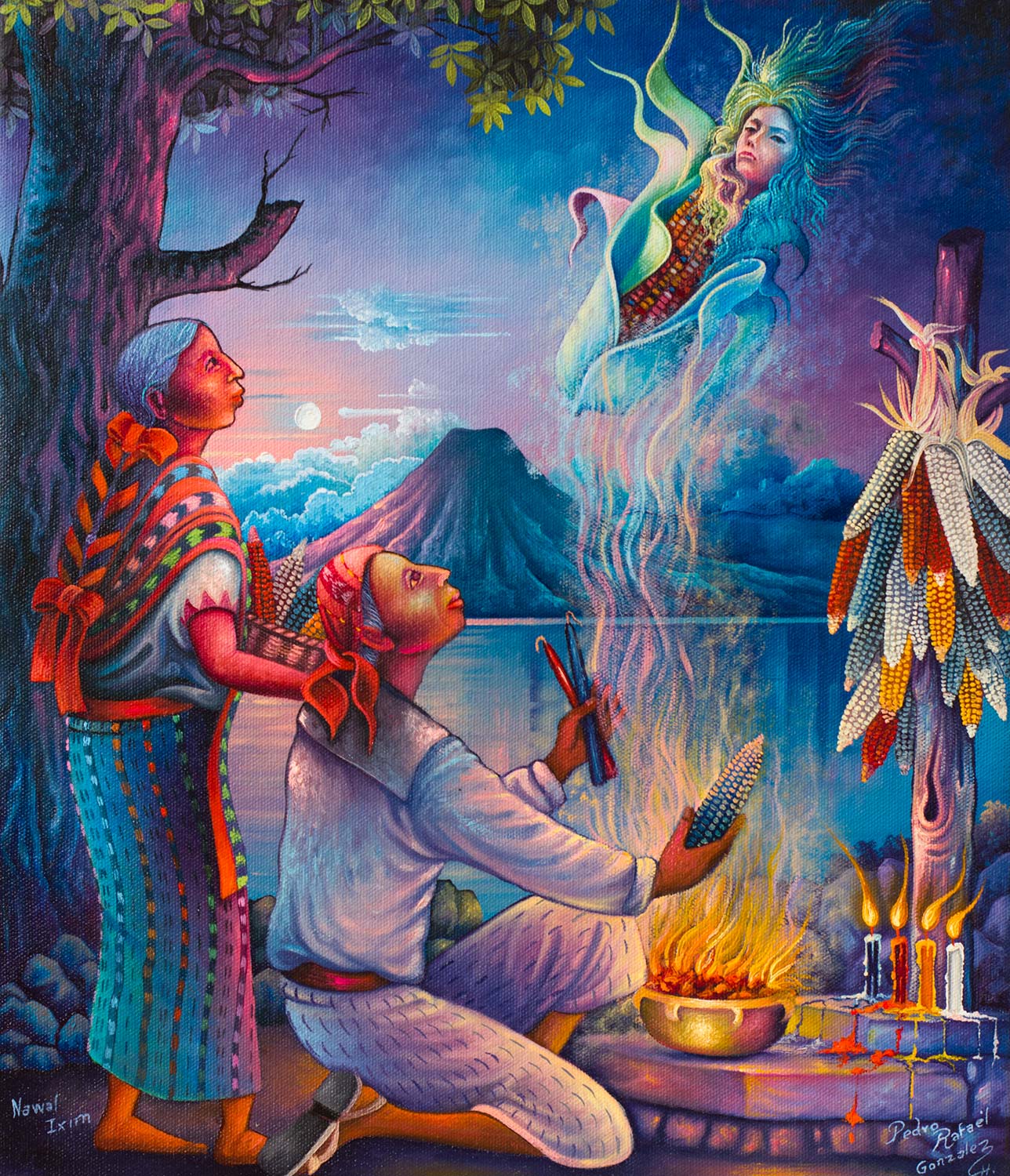In this painting we see Pedro Rafael’s personification of maize. When the Maya perform a ritual to bless their corn for the next year’s planting, they commune with the spirit of maize during the ceremony. Corn is the staple of Maya diet and is part of the Maya creation story as expressed in the Popol Wuj. In that story, the hero twins defeat the gods of the underworld, tricking them by dying and coming back to life. Each year, the twins come up from the underworld and are born as ears of corn, only to die again, and the cycle repeats itself.
Ixim is the Tz’utuhil word for corn or maize. Nawal, also written nahual, is the Mayan word for a guardian spirit. The Maya believe that each person is born with a guardian spirit or nahual, usually an animal or bird that is determined by the person’s astrological birthday. There is also life or spirit throughout the world, in all things. Thus a mountain has a guardian force or spirit, the wind has a spirit, and living plants have a spirit. Although this idea is foreign to Christianity, it is consistent with modern physics, where on a subatomic level everything is energy. This energy present in everything, including inanimate objects such as rocks, comprises its spirit or nahual.


